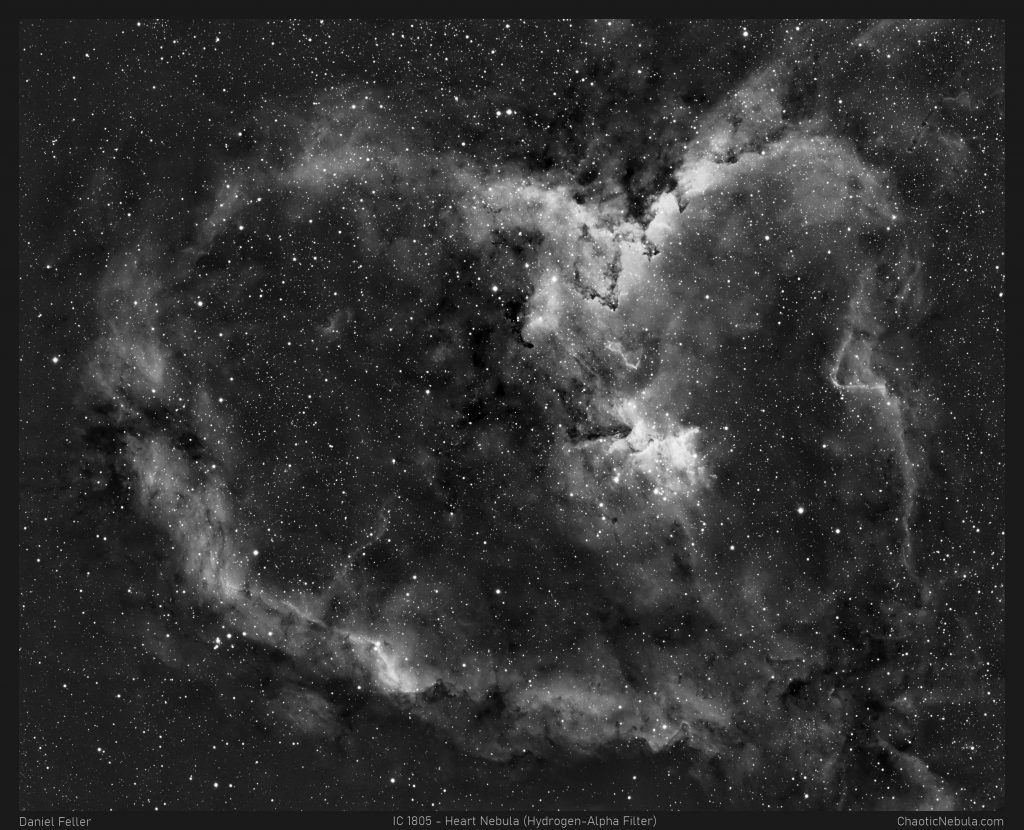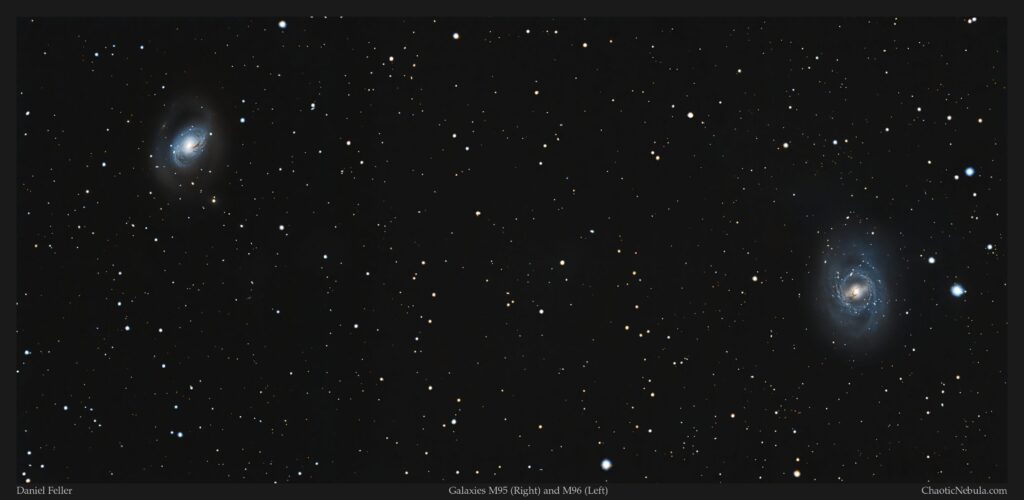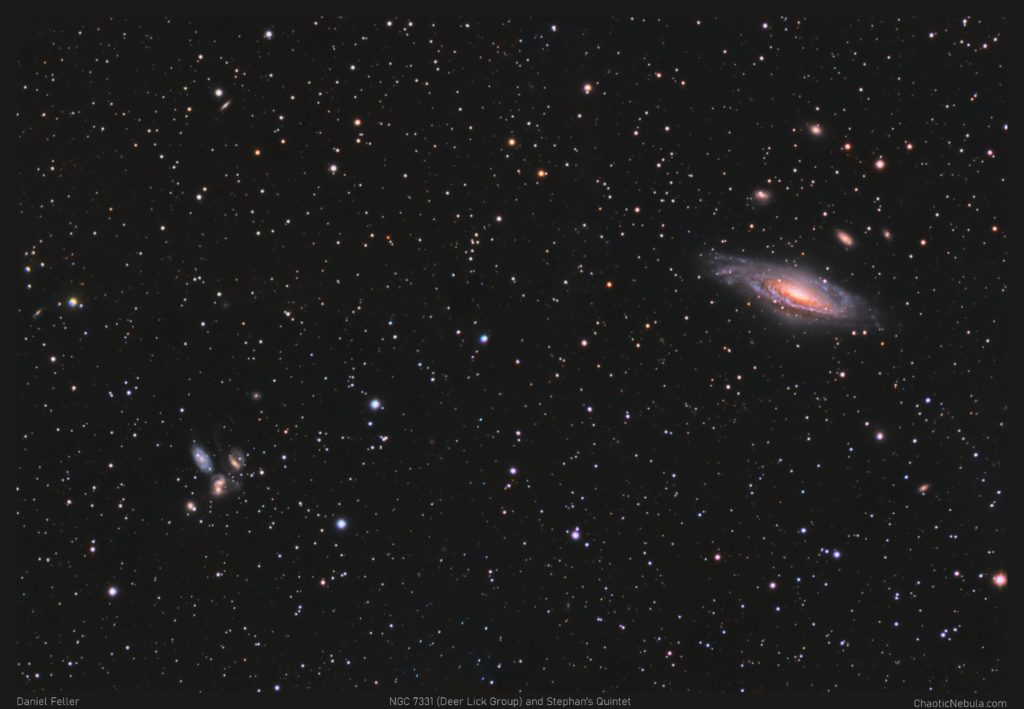Astrophotography mosaics offer a solution to those pesky galaxies, nebula, and clusters that do not fit nicely into the field of view. This technique lets you stitch multiple panels together into a much larger image.
The beauty of mosaics lies in their flexibility. They can be as large or small as you desire. But there’s one key consideration: capturing enough light frames for each panel of the mosaic, which requires significantly more telescope time. This ensures a good signal-to-noise ratio, resulting in a clean and detailed final image.
The good news is that creating a mosaic fits seamlessly into the existing astrophotography processing workflow, regardless if working with Broadband Workflow for Galaxies and Nebula, Broadband Workflow for Clusters, or Narrowband Workflow for emission nebula.




Once the images are captured, pre-processed, cropped and have had the background extracted, you can start merging the sections together.
Mosaic Workflow
(For small mosaics 2-3 panels)
The process for smaller mosaic (2 panels) simply uses the coordinates contained within each panel to align the images.
Image Solver: Use the PixInsight Image Solver Script to find the coordinates for each panel of the mosaic.
Mosaic By Coordinates: Uses the image’s coordinates stored within the FITS header to align the panels of the mosaic together
dna Linear Fit: One of the challenges with mosaic images is the signal intensity differences between each panel of the mosaic. The brightness levels must be equalized before integrating into a combined mosaic image.
Gradient Merge Mosaic: Seamlessly blend multiple image panels together by smoothly transitioning brightness differences at the edges of each panel, resulting in a natural-looking final image with minimal seams.
Dynamic Crop: Remove the edges and adjust the rotation of the integrated image.
Gradient Removal: Smooths out differences in the background across the mosaic panels.
Mosaic Workflow
(For large mosaics 3+ panels)
The process for a larger mosaic utilizes a generated star map. Stars within each panel are aligned to the generated star map. This process works well for mosaics that are larger than two panels.
Image Solver: Use the PixInsight Image Solver Script to find the coordinates for only the center-most panel of the mosaic. Once solved, capture the right ascension, declination, rotation, and pixel size values.
Catalog Star Generator: Create a star field based on data from astronomical catalogs covering an area slightly larger than the estimated mosaic size.
Mosaic Star Alignment: Use the Star Alignment process to align the mosaic panels with the generated star catalog.
dna Linear Fit: One of the challenges with mosaic images is the signal intensity differences between each panel of the mosaic. The brightness levels must be equalized before integrating into a combined mosaic image.
Gradient Merge Mosaic: Seamlessly blend multiple image panels together by smoothly transitioning brightness differences at the edges of each panel, resulting in a natural-looking final image with minimal seams.
Dynamic Crop: Remove the edges and adjust the rotation of the integrated image.
Gradient Removal: Smooths out differences in the background across the mosaic panels.